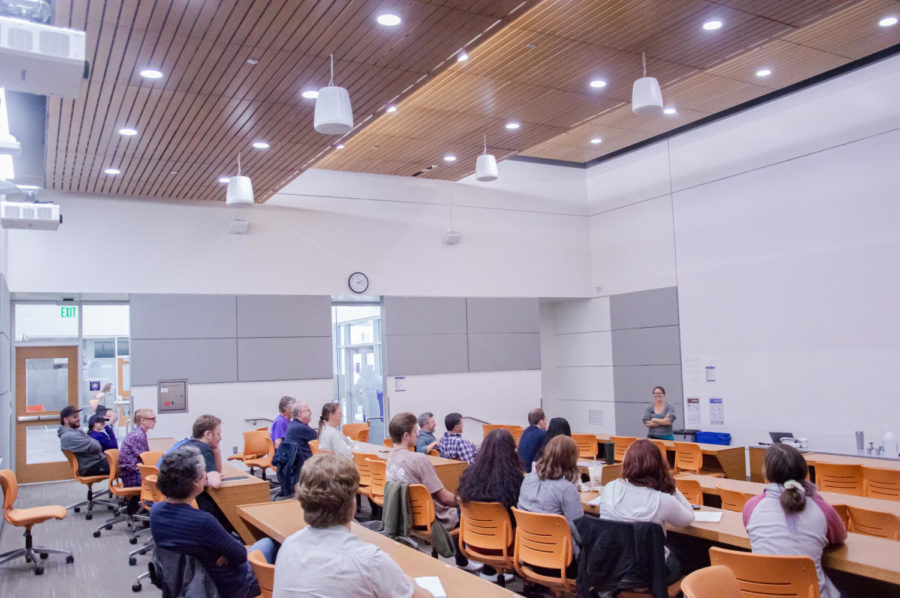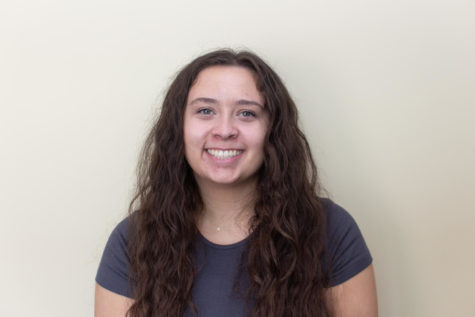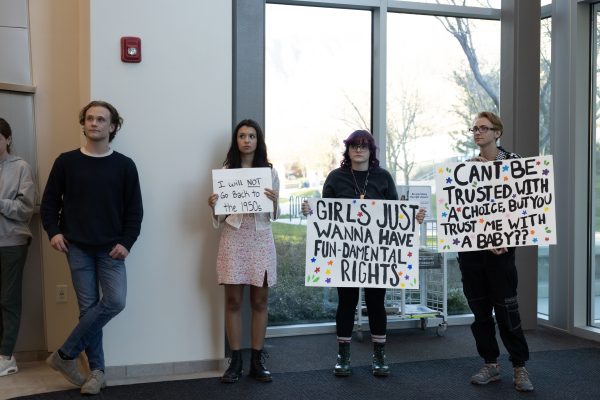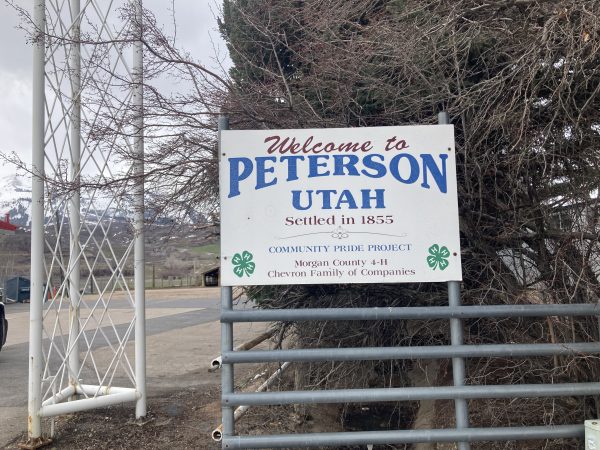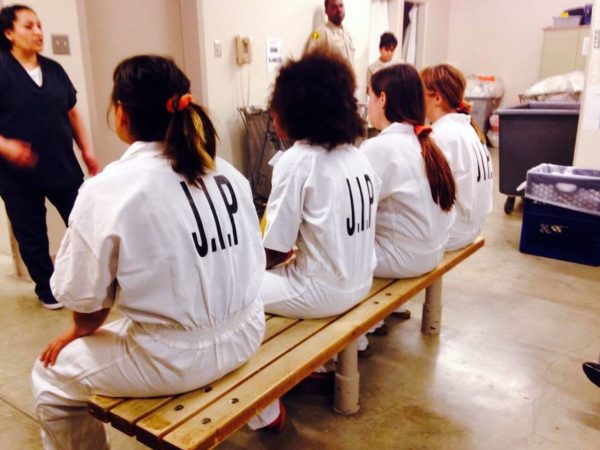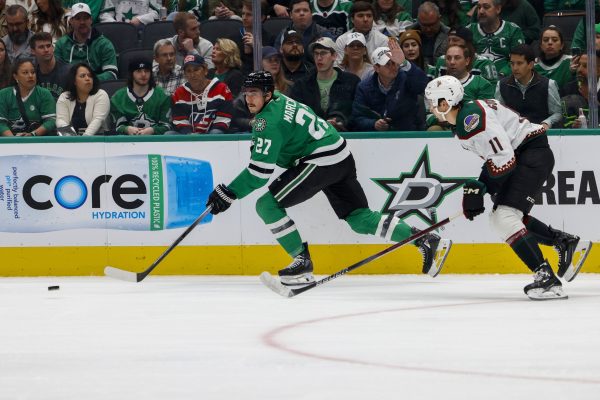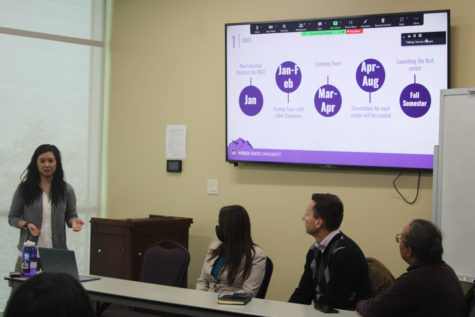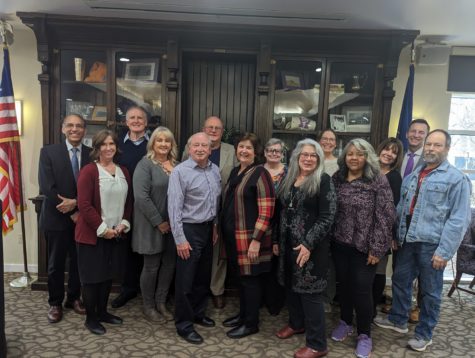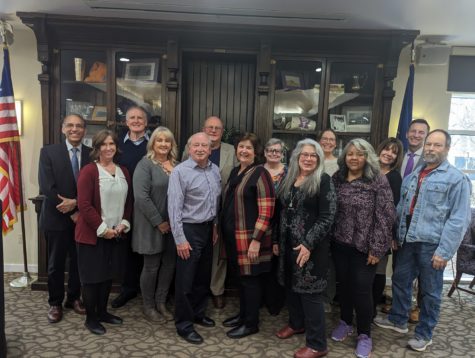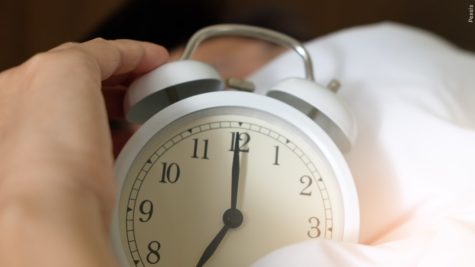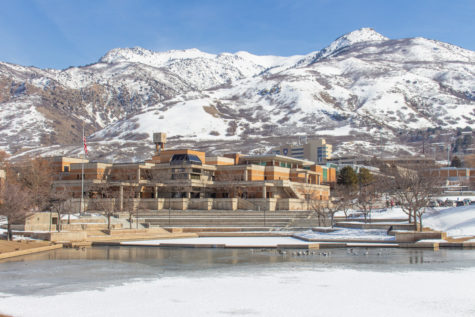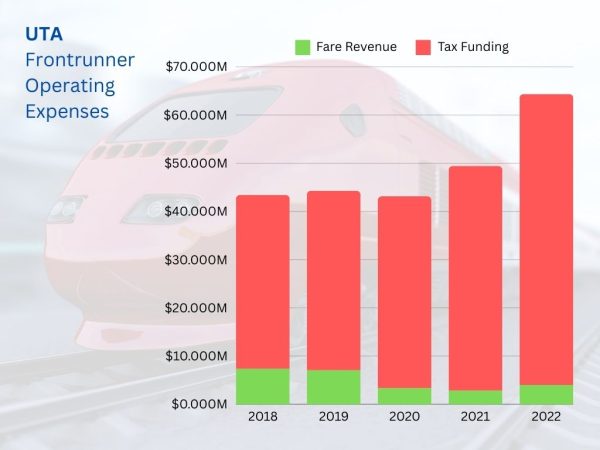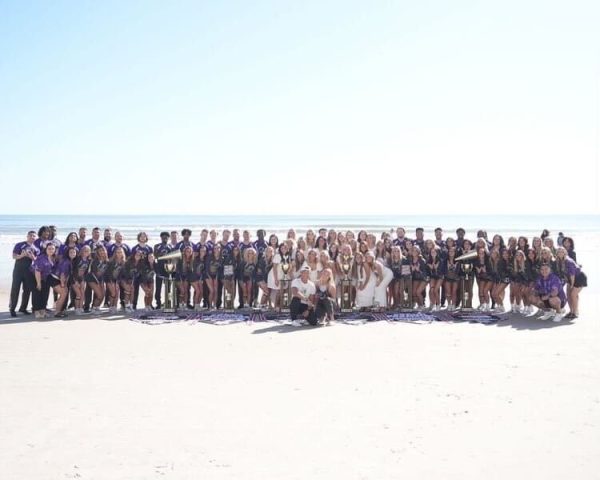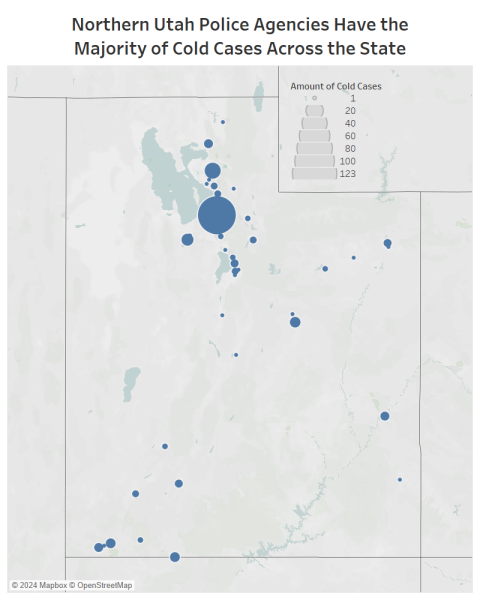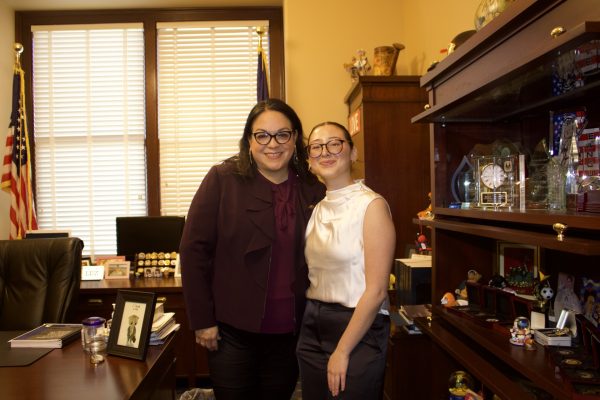Lighting the way for new technology
Kristin Rabosky, associate professor of physics at Weber State University, was inspired by the work of Jeremy Mathews and his 2015 senior project, where he built a color filter wheel for an electron microscope, allowing for a slightly more defined image.
Rabosky was determined to rebuild the wheel and make it even better than the original. Rabosky spoke about her experience during the Let There Be Light seminar held in Tracy Hall on Sept. 14.
Rabosky employed the help of students Brycen Lee and Martin Totland in order to recreate Mathew’s wheel.
Lee and Totland did more than just rebuild it — together, they built a more advanced version of the wheel, which allowed it to work in a vacuum. The new wheel also contained replaceable filters and used a slot to see what the object looked like without a filter.
Rabosky brought in rocks to study under the microscope, leading to a partnership with Elizabeth Balgord, associate professor of geoscience at WSU.
Balgord outsourced the analysis of the zircon rocks to the University of Arizona to see if they could use the electron microscope and filter wheel to analyze these zircons in-house.
Sarah Stamps, University of Arizona researcher and science ambassador, was able to build a proof of concept and use the filter wheel and electron microscope to get a clearer image.
During her sabbatical, Rabosky hoped to visit the University of Arizona’s lab and see how their electron microscope was built and functioned.
Unfortunately, Rabosky and Balgord contracted COVID-19 and could not attend in person. Through video calls, they were able to view and learn more about the technology the University of Arizona used.
Rabosky and Balgord discovered that by taking a cathodoluminescence photo and a backscattered electron photo, they could subtract the backscattered electron photo to clear away the static of the image, rendering it clearer.
“I think it’s good for the students to see how smaller student projects can lead into a bigger whole,” Robosky said during the seminar.



